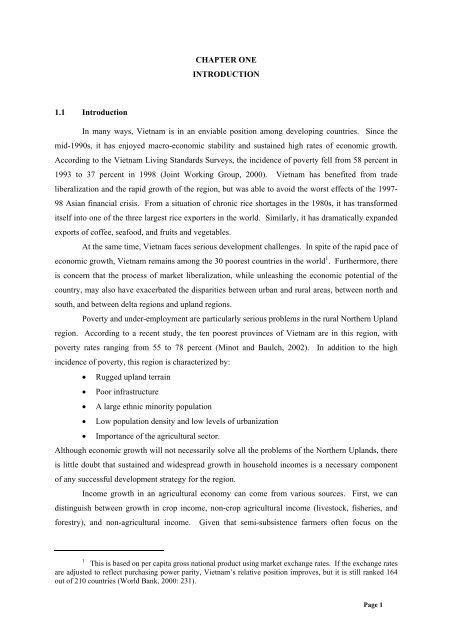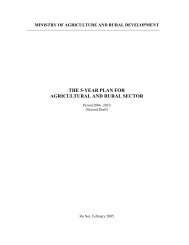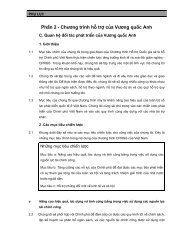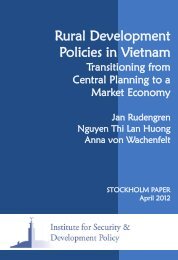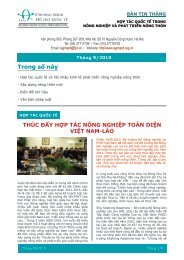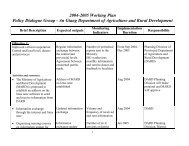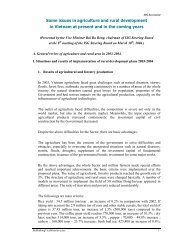Income Diversification and Poverty Income Diversification and Poverty
Income Diversification and Poverty Income Diversification and Poverty
Income Diversification and Poverty Income Diversification and Poverty
You also want an ePaper? Increase the reach of your titles
YUMPU automatically turns print PDFs into web optimized ePapers that Google loves.
CHAPTER ONE<br />
INTRODUCTION<br />
1.1 Introduction<br />
In many ways, Vietnam is in an enviable position among developing countries. Since the<br />
mid-1990s, it has enjoyed macro-economic stability <strong>and</strong> sustained high rates of economic growth.<br />
According to the Vietnam Living St<strong>and</strong>ards Surveys, the incidence of poverty fell from 58 percent in<br />
1993 to 37 percent in 1998 (Joint Working Group, 2000). Vietnam has benefited from trade<br />
liberalization <strong>and</strong> the rapid growth of the region, but was able to avoid the worst effects of the 1997-<br />
98 Asian financial crisis. From a situation of chronic rice shortages in the 1980s, it has transformed<br />
itself into one of the three largest rice exporters in the world. Similarly, it has dramatically exp<strong>and</strong>ed<br />
exports of coffee, seafood, <strong>and</strong> fruits <strong>and</strong> vegetables.<br />
At the same time, Vietnam faces serious development challenges. In spite of the rapid pace of<br />
economic growth, Vietnam remains among the 30 poorest countries in the world 1 . Furthermore, there<br />
is concern that the process of market liberalization, while unleashing the economic potential of the<br />
country, may also have exacerbated the disparities between urban <strong>and</strong> rural areas, between north <strong>and</strong><br />
south, <strong>and</strong> between delta regions <strong>and</strong> upl<strong>and</strong> regions.<br />
<strong>Poverty</strong> <strong>and</strong> under-employment are particularly serious problems in the rural Northern Upl<strong>and</strong><br />
region. According to a recent study, the ten poorest provinces of Vietnam are in this region, with<br />
poverty rates ranging from 55 to 78 percent (Minot <strong>and</strong> Baulch, 2002). In addition to the high<br />
incidence of poverty, this region is characterized by:<br />
• Rugged upl<strong>and</strong> terrain<br />
• Poor infrastructure<br />
• A large ethnic minority population<br />
• Low population density <strong>and</strong> low levels of urbanization<br />
• Importance of the agricultural sector.<br />
Although economic growth will not necessarily solve all the problems of the Northern Upl<strong>and</strong>s, there<br />
is little doubt that sustained <strong>and</strong> widespread growth in household incomes is a necessary component<br />
of any successful development strategy for the region.<br />
<strong>Income</strong> growth in an agricultural economy can come from various sources. First, we can<br />
distinguish between growth in crop income, non-crop agricultural income (livestock, fisheries, <strong>and</strong><br />
forestry), <strong>and</strong> non-agricultural income. Given that semi-subsistence farmers often focus on the<br />
1<br />
This is based on per capita gross national product using market exchange rates. If the exchange rates<br />
are adjusted to reflect purchasing power parity, Vietnam’s relative position improves, but it is still ranked 164<br />
out of 210 countries (World Bank, 2000: 231).<br />
Page 1


